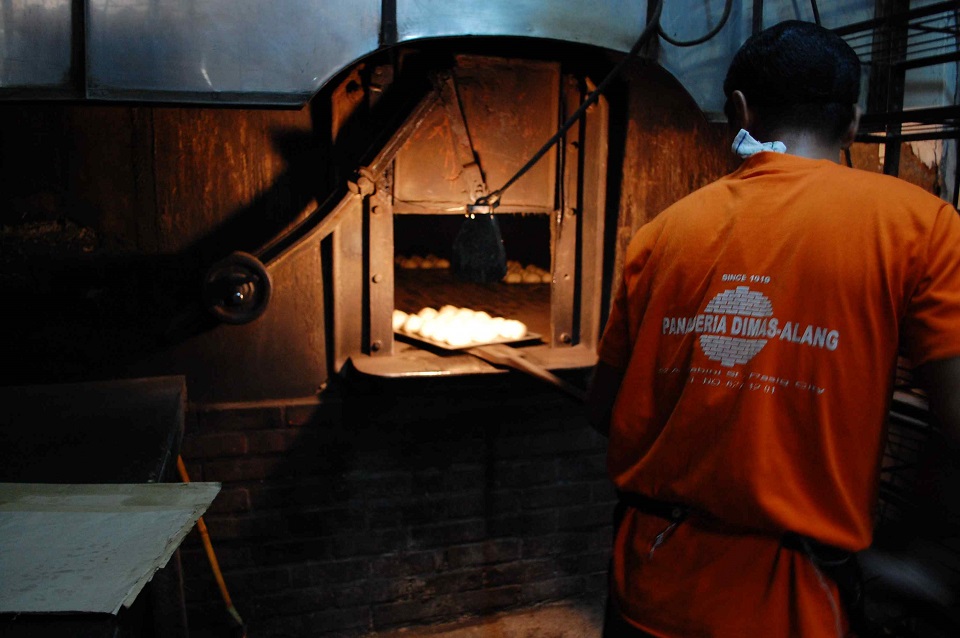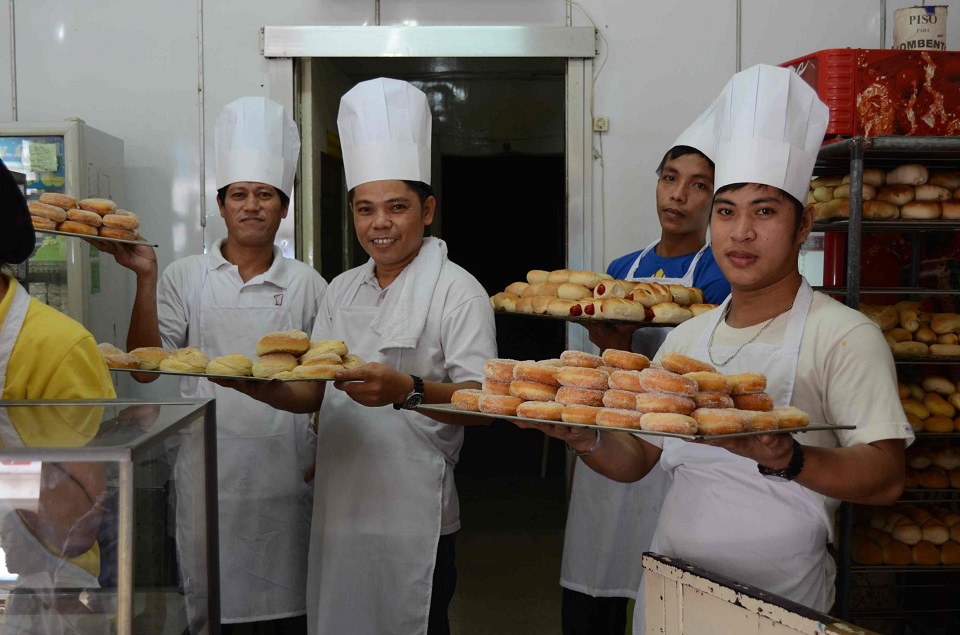ADVERTISEMENT
Filtered By: Lifestyle
Lifestyle
A good rise: What the future holds for the Philippine baking industry
Text and photos by AMY A. UY

The pugon is still in use in the nearly century-old Panaderia Dimas-alang.
In our visits to several panaderia all over the country in the last three years, we saw how corner bakeries have embraced new technologies slowly but surely, and have finally begun regarding baking as the science that it actually is. The days of using empty milk cans and plastic pitchers to measure ingredients are fading slowly. Digital weighing scales are now widely used. Recipes that were passed on from baker to baker by mouth and memory are now written and serve as exact guides to ensure quality. And the most humble panaderia have since begun to offer a wider variety of breads, both traditional and modern.

Ingredients for the torta are mixed by hand in Argao, Cebu.
Like in Argao, Cebu, where the Visayan celebratory cake, torta, is still made using tuba (coconut toddy), pork lard, an obscene amount of egg yolks, mixed by hand in a palanggana and baked in a hudno, a clay oven fired using dried coconut husks.
Or in Camalig, Albay, where Bernardita Martillana has been baking the vanishing Italian panettone-like bread marcasotes for nearly 50 years using a rather primitive method of steaming in a kuron (a huge clay pot) on top of banana bark.
Adapting and modernizing
But our trips also yielded unique finds—the chocolate cinnamon babka (Panaderia Dimas-alang, Pasig), the dragonball (Candon Bakery in Ilocos Sur), fancy filled doughnuts that rival those of the big donut chains (Luzon Bakery in Legazpi City, Albay), French bread (Vietville in Palawan), Nutella- and Speculoos-flavored ensaymada (Baby Pat Breads and Pastries in Laguna)—that show an industry adapting to changing times and trends.
As even traditional bakeries have shifted to modern techniques and the use of better equipment and technology, it has become easier to standardize recipes and thereby open themselves up to expansion via franchising. The success of bakery chains like Julie’s Bakeshop, Panaderia Pantoja and Pan de Manila are proof of this.
These days, with emerging foreign bakery chains like Bread Talk and Erik Kayser exposing Filipinos to a wider array of bread choices, local bakeries have also found the need to step up. They invest in product creation and in enhancers and flavorings that help improve the shelf life and quality of their products as well as in the latest mixers, kneaders, ovens and equipment that keep production times short and costs low.

A baker prepares bread at the modern Panaderia Pantoja
Henry Ah, president of FCBAI, also acknowledged the presence of a new breed of bakers trained in classic techniques in culinary schools as a boost to the industry.
Ah envisions more professionally-run bakeries that can produce superior products at par with what the world has to offer. And our showing at the recent World Pastry Cup in Lyon, France, where three Filipino pastry chefs emerged 12th among 21 finalists and won the Scupted Ice special award, lends a clear testimony to Filipino baking artistry.
From one generation to the next
As ownership of long-standing bakeries have changed from generation to generation, we have also seen how well the heirs have risen to the challenge of ensuring that the legacies passed on to them will last. Mark Sanchez of Silay’s iconic El Ideal Bakery, Anthony Pantoja of Panaderia Pantoja, Sandra Ng of Iloilo’s 119-year-old Panaderia ni Pa-a, Michael Sy of Cebu’s La Fortuna Bakery and so many young people like them have vowed to preserve our baking traditions while bracing themselves for the winds of change that constantly descend upon the industry they grew up in.
For instance, new owner Wilson Lee Flores has harnessed the power of social media to breathe new life into Kamuning Bakery (since 1939), the only one that still makes the legendary pan de sal de suelo (bread baked directly on the suelo, or floor of the oven). Its presence on Facebook, Instagram and Twitter has helped to double its sales. Kamuning Bakery has now become a full-fledged bakeshop offering modern custom cakes along with the classic egg pie and cookies like bodigos, apas, lubid-lubid and more. And young customers have since “discovered” the bakery, wanting a taste of the breads of old.

Bakers at United Bakery in Catbalogan present their wares
To them, baking has been and will always be more than something that literally and figuratively puts food on the table. It is a source of inspiration. It is an enduring passion from which they reap the sweetest and most satisfying rewards. With them, we can rest well, knowing that the local baking industry is in good, eager and more experienced flour-dusted hands. — BM, GMA News
Amy A. Uy is the co-author with Jenny Orillos of Panaderia: Philippine Bread, Biscuit and Bakery Traditions.
More Videos
Most Popular




